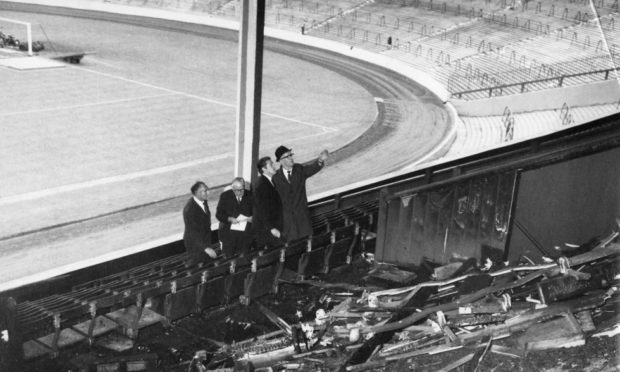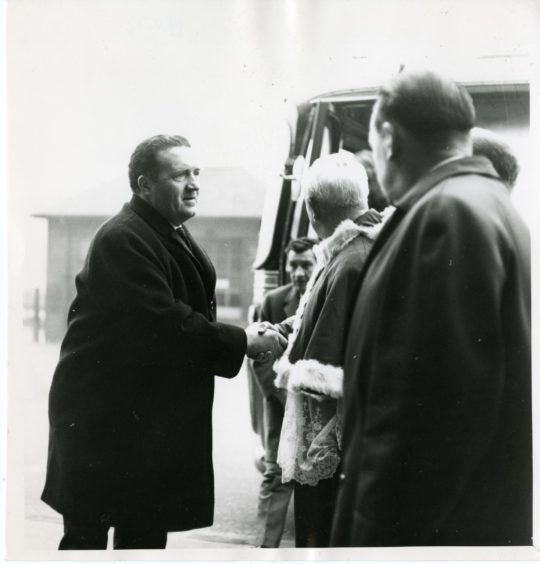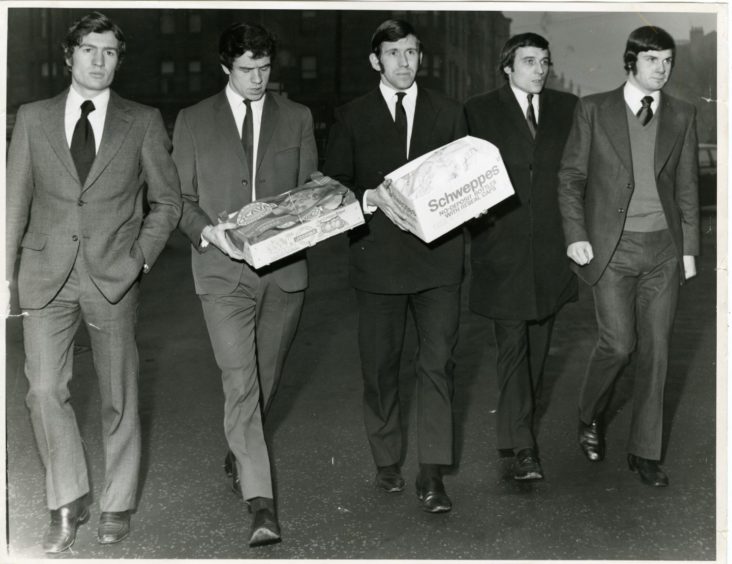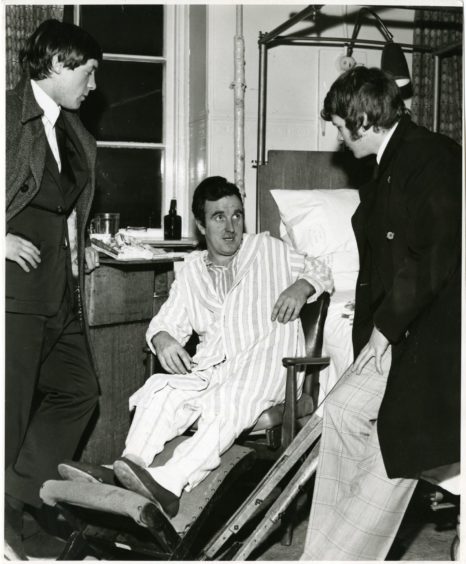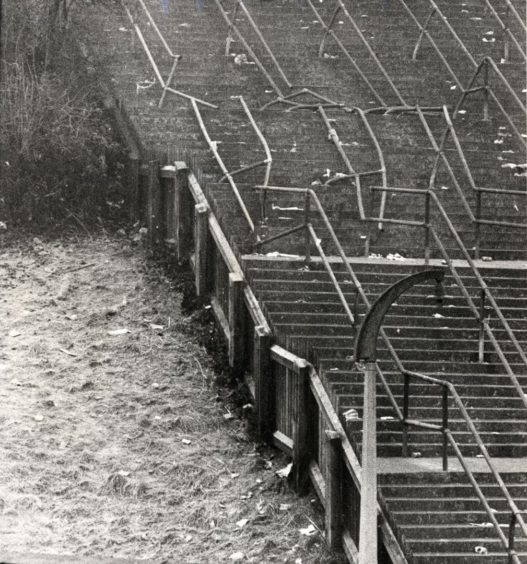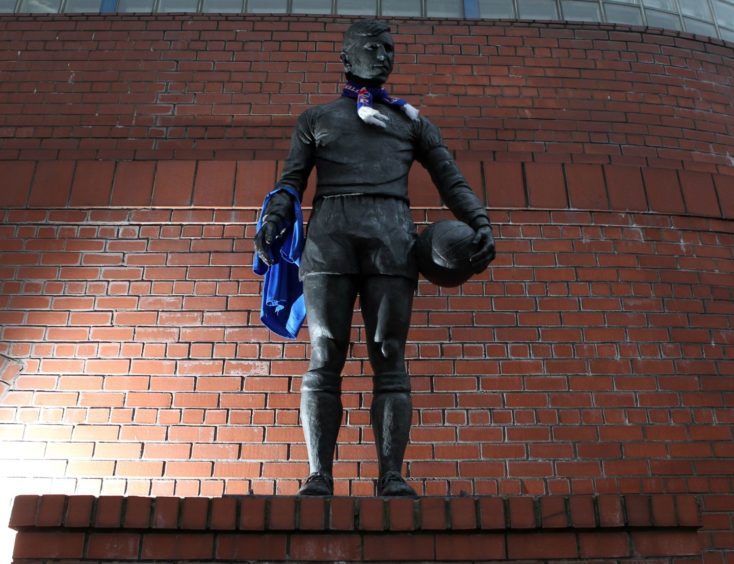The Ibrox Disaster was one of the most grievous events ever to happen in the history of British sport.
When all the devastation erupted at the end of the Old Firm derby on January 2 1971, it left 66 people dead, more than 200 others injured, and was the prelude to scores of funerals across the west, central and east of Scotland, with Rangers manager, Willie Waddell, and his Celtic counterpart, Jock Stein, not only united in grief and solidarity, but determined to show that this tragedy transcended any religious divide.
The cynics might point out that the ceasefire between the two tribes was just a temporary phenomenon. Within a few months, the supporters had reverted to singing their sectarian songs and flinging abuse at each other again.
Yet one of the aspects of that January calamity which hasn’t been discussed is how much worse the death toll might have and the random nature of those who lived and died. In some cases, it even came down to the type of shoes that fans were wearing.
Sickening scenes
Andrew Ewan, a head librarian in Dunoon, recalled how close he came, as a 23-year-old, to being engulfed in the sickening crush at the climax of the game.
He said: “I always remember standing in the middle of Stairway 13 and looking at this pile of bodies, some of them black, some of them blue, lying like rag dolls on all sides of me, while other fans were desperately grappling on to whatever they could find to avoid falling into the carnage.
“I was at the match on my own because my best mate was in Aberdeen with his parents and, with hindsight, I believe that one of the reasons I survived is that I was wearing slip-on shoes and I lost them as hundreds of supporters were caught in the crush.
”It might sound strange, but I’m convinced that if I had been wearing shoes with laces, as I normally did, I wouldn’t have been able to wriggle out of the morass. But I was tall and skinny in those days and, somehow I escaped.
”Yet, in retrospect, any of us could have been killed, this was an accident waiting to happen, and you could drive yourself mad trying to rationalise why some people survived and others perished.
”By the time the emergency services reached the scene and worked heroically to rescue as many of the injured as they could, I was in shock and I remember a policeman saying: ‘Go home, son. Go home to your loved ones. There’s nothing you can do here’.
“That was the helpless feeling which engulfed us all when we woke up the following morning. It definitely brought us together, Rangers and Celtic fans sharing the grief. But sadly, it didn’t last long.”
Haunted
Craig Smith, a Livingston-based glazier, was not at Ibrox, but the escalation of the contest into conflagration haunted him for years.
He explained: “My father George was heading off for the match and, as he put his coat on, I asked if I could go along with him. But he just laughed and said his goodbyes.
”Well, at about ten to five, there was a news flash on TV, reporting that there had been an accident at Ibrox, but the programme had no details of any injuries.
“My mother looked worried and, although she wasn’t too concerned at the outset, she became increasingly anxious as the time passed, because she and my father had arranged to go to a golf club dance that evening.
“The later it grew, you could tell that something was terribly wrong by my mum’s expression and she was constantly on the phone. Then, suddenly, the doorbell rang. My brother Stephen went to answer it, my mum screamed, then Stephen and my other brother George were standing together with tears streaming down their cheeks.
“For a few moments, I couldn’t understand what was going on, but eventually, we learned the truth. That while my dad had managed to push his brother John and brother-in-law Alex over the fence, he himself had been swept away with the force of the crowd and, even as John shouted towards him, he saw him die, upright.
“The very life was squeezed out of him on that terrible, terrible afternoon. At the time, we were living in house No 66 on the 14th floor, although you had to walk down to the living room on the 13th floor.
“So my father, who was born on the 14th of August, was killed on the 13th stair and was one of the 66 people killed at Ibrox. I will never forget it.”
Different world
In many respects, the 197os still seem within touching distance, but in other ways, they belong to an entirely different world.
Nowadays, whenever there is significant news story, be it a riot, a natural disaster or a terrorist atrocity, the media will descend in the scene within a matter of minutes, helped or occasionally hindered by the public blitzing then with shaky mobile phone footage and on-the-spot descriptions of what has just occurred.
There was none of this after the calamity of Ibrox, although it was eventually resolved that the BBC would shelve any plans to broadcast any highlights of the match.
Retired TV executive, Bill Malcolm, told me: “At that time, in my role as director of the Saturday night football programme Sportsreel, we were out of the loop once the Old Firm match finished – whereas when you fast-forward through the decades, you have Sky, News 24, the internet….all kind of breaking stories delivered straight to your phone, tablet or IPad.
“In 1971, we had the Green Citizen sports paper reporting that three supporters had died at Ibrox. And that was it.
“Afterwards, some of us at the BBC were criticised for not having pictures of the disaster, but you have to realise that news and sport were entirely separate entities at the time and there was no blurring of the distinctions.
“All the same, there was never any question of us going ahead with the plan of screening highlights of the match. And, let’s face it, on that evening, an awful lot of people decided they would never again describe somebody missing a penalty as a tragedy, because the result at Ibrox didn’t matter at all in the grand scheme of things.
“Life couldn’t continue as normal in these circumstances. However, I was later involved in the fatal accident inquiry and I remember the pressure which was put on my secretary to recall the exact moment when the disaster started.
“Obviously, it was a very painful experience for everyone caught up in the search for answers and the job of allocating blame, but we got off very lightly, didn’t we?
“The fact is that we were still alive to discuss what should and shouldn’t have been done on that Saturday. The grieving families had no such get-out.”
Fatal accident inquiry
The FAI in Glasgow opened on February 15 1971 and lasted seven days, although the jury of four men and three women had been instructed not to make recommendations around safety precautions at football grounds, because an inquiry led by Lord Wheatley would be examining these issues.
The disaster eventually led to a huge redevelopment of the Ibrox ground, spearheaded by Waddell, who visited Borussia Dortmund’s Westfalenstadion for inspiration.
After three years’ reconstruction work, three-quarters of the ground being replaced by modern all-seater stands, Ibrox was converted to a 44,000-capacity stadium by 1981. Further work in the 1990s increased the stadium capacity to 50,000, and Ibrox was subsequently awarded UEFA five-star status.
For many years after the tragedy, there was only a small plaque at the corner of the ground where it happened.
However, in 1995, Rangers announced plans to commemorate the 66 fans killed in the 1971 disaster.
Then, on January 2 2001, the 30th anniversary of the tragedy, a larger monument was unveiled at the corner of the Bill Struth Main Stand and the Copland Road Stand.
The monument contains blue plaques displaying the names of each person killed in all three incidents. A statue of John Greig, the Rangers captain at the time of the 1971 disaster, stands atop the monument.
There was no question as to who was to blame for the dreadful events 50 years ago. After hearing about the history of Stairway 13, which included previous incidents in September 1961 when there were 70 people injured and two deaths, September 1967 when 11 people were taken to hospital, and in January 1969 when 29 people were injured, Sheriff Irvine Smith was unequivocal in his judgment.
Judgement
He said: “So far as the evidence is concerned, the Board never so much as considered that it ought to apply its mind to the question of safety on that particular stairway…and would appear – I put it no higher – to have proceeded on the view that if the problem was ignored long enough it would eventually go away.
“Indeed, it goes further than this because [being] certain of their actions can only be interpreted as a deliberate and apparently successful attempt to deceive others that they were doing something, when in fact, they were doing nothing.”
It was a damning indictment, but no words, or punishments, or compensation could bring the victims back.
Their families will never forget the terror, tears and grief which surrounded their loved ones going to a football match and not coming home.
